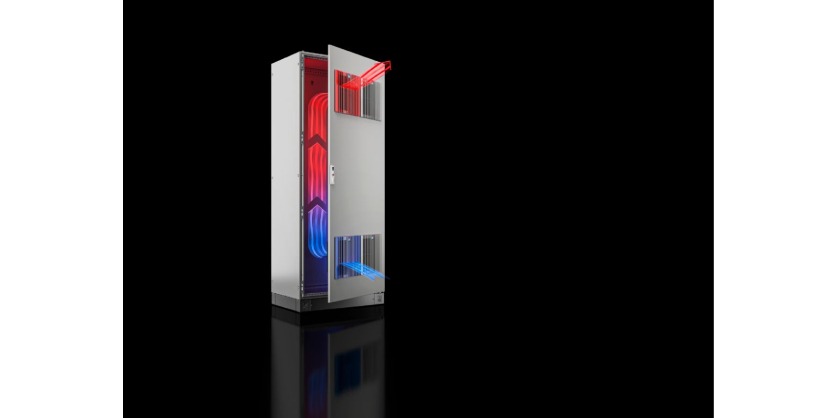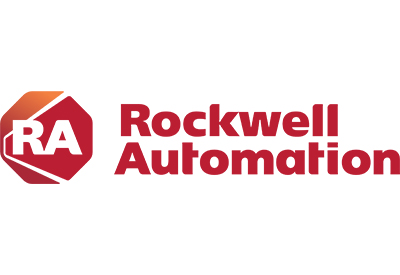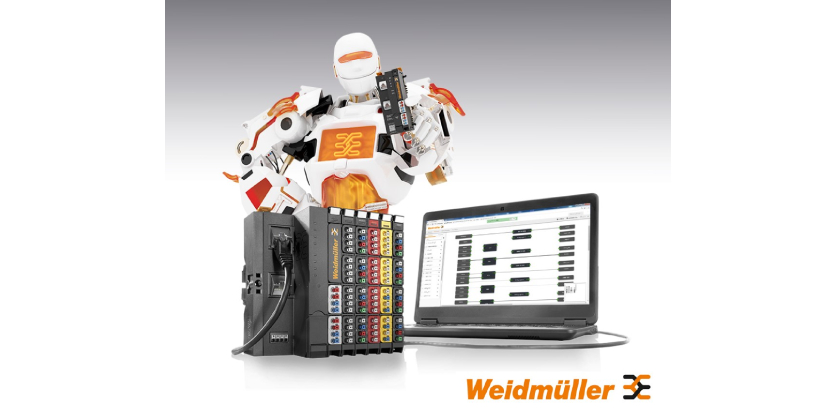5 Benefits of the Blue e+ System
Blue e+: Revolutionizing Cooling Units
April 30, 2024

The Blue e+ introduces a new era of cooling technology, redefining cost-effectiveness and energy conservation. With speed-regulated components and patented heat pipe technology, it stands as a quantum leap in the world of enclosure climate control. Let’s explore the five key benefits of Blue e+ cooling units over traditional systems:
1. Energy Efficiency
Energy efficiency is paramount when considering the total cost of ownership for an enclosure climate control solution. Electricity consumption significantly impacts operating costs. The Blue e+ employs a hybrid approach, merging conventional compression cooling (similar to traditional air conditioners) with a heat pipe.
Here’s how it works:
- When the interior temperature of the enclosure reaches a predefined threshold, a frequency inverter automatically reduces the compressor’s speed, thereby lowering cooling output.
- The controller continuously monitors the temperature and adjusts cooling output accordingly.
- This dynamic method not only saves energy but also extends the compressor’s service life. By minimizing the number of on-off cycles, the system maintains a stable, constant temperature, prolonging component life.
- The Blue e+ intelligently utilizes the heat pipe (operating at 60% to 80%) while keeping the compressor at 20% to 40%. It optimizes efficiency by using the compressor-based system only when necessary.
2. Flexibility
The Blue e+ embraces inverter technology, making it universally adaptable. Whether a country requires 115V or 230V, these systems seamlessly adjust to the available voltage. This flexibility benefits original equipment manufacturers (OEMs) and distributors:
- Stocking just one item for both voltage cases streamlines inventory management.
- The reduction in device variants simplifies logistics and ensures compatibility across regions.
3. NFC Capabilities
The Blue e+ units go beyond conventional cooling solutions by incorporating password-protected Near-Field Communications (NFC) capabilities. Here’s why this matters:
- Mobile Interaction: Operations personnel can seamlessly communicate with the cooling unit using their smartphones. The NFC interface provides real-time performance data, allowing quick adjustments to the unit’s settings when necessary.
- Efficiency at Your Fingertips: Whether it’s monitoring performance or fine-tuning parameters, the NFC-enabled Blue e+ ensures efficient management without complex procedures.
4. Simplicity
The Blue e+ prioritizes ease of maintenance and service. Consider these features:
- Standardized Cut-Out Sizes: Enclosure doors and side panels feature consistent cut-out sizes, streamlining installation.
- Simplified Fan, Cable, and Control Panel Installation: Quick and straightforward setup saves time and effort.
- Accessible USB Interface: Efficient diagnostics become reality through the secure USB interface. Monitor critical data—temperature, efficiency, and more—for all operating units at a glance.
- Intuitive Touch-Screen Display: The front-facing touch screen provides relevant information in plain text, supporting multi-lingual communication.
- Seamless Integration: Standardized communication interfaces ensure easy integration into production plant control systems.
5. Safety
Thermal management is paramount for sensitive components. The Blue e+ not only extends their service life but also guarantees a stable, constant temperature—outperforming traditional cooling systems.
Conclusion
In summary, the Blue e+ cooling units represent a leap forward in thermal management technology. Their advanced features—such as password-protected NFC capabilities, streamlined installation, and superior safety—make them an ideal choice for your cooling needs. If you’re ready to explore how these cutting-edge solutions can enhance your operations, hey invite you to contact them. Embark on a journey toward efficient and reliable cooling solutions tailored to your requirements.
More Information
Related Story
Rittal Automation Systems – Revolutionizing Enclosure Manufacturing
Elevate your enclosure production process with the cutting-edge solutions offered by Rittal Automation Systems. Representing a comprehensive suite of products and services, Rittal Automation Systems spans the spectrum from manual tools to state-of-the-art, fully automated machine technology tailored for enclosure manufacturing.





